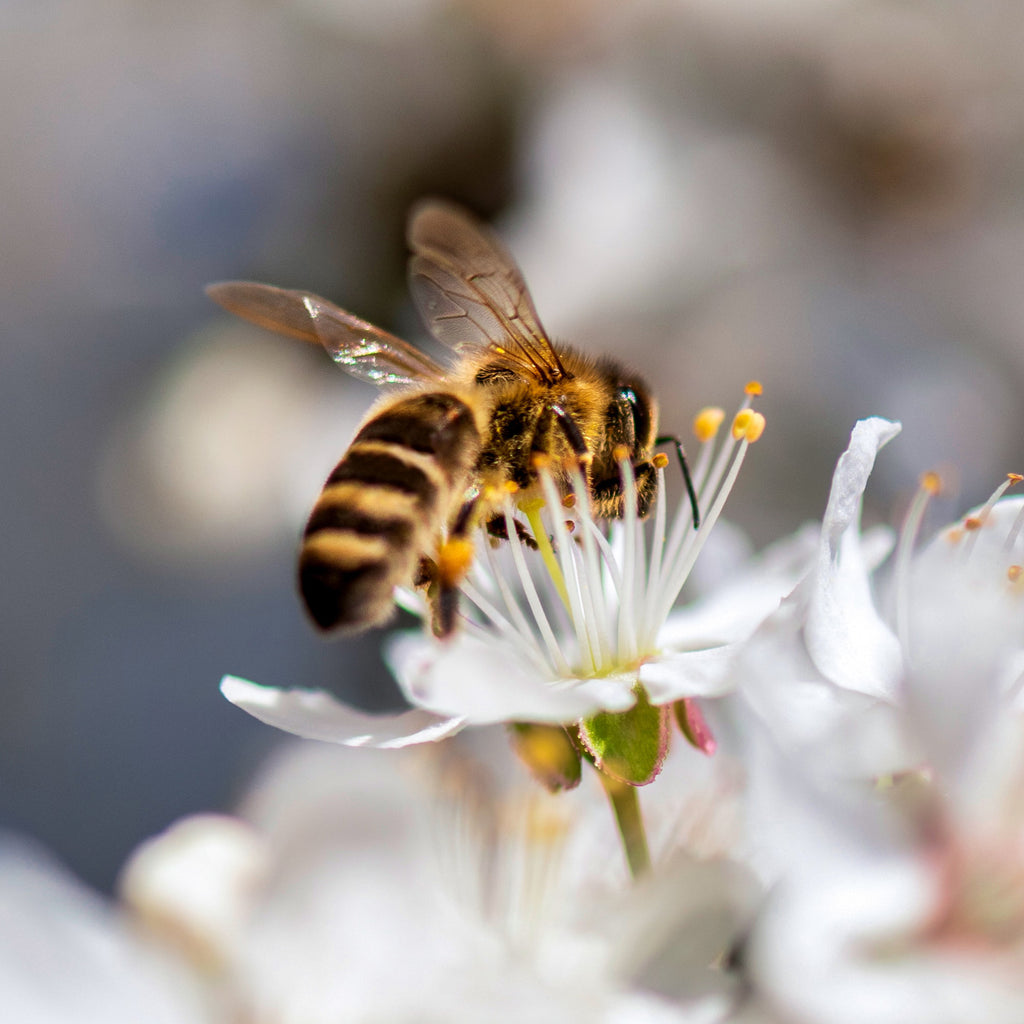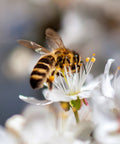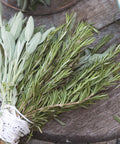
While most people love flowers, whether growing them in their gardens or purchasing them in the store, we oftentimes forget what are essential for flowers to grow: bees.
Bees have a symbiotic relationship with flowers like no other. Meaning that while flowers are benefiting from being pollinated, bees are also receiving benefits in return.
The Role of The Bee
Bees are thought to be one of the first intentional pollinators that coincided with flowering plants dated back to 120 million years ago. Unlike unintentional pollinators, such as beetles and flies that managed to accidentally carry pollen from flower to flower, bees actually set out to pollinate the earth.
Bees are responsible for gathering pollen from the flowers they land on with their tiny hairs, and later passing it onto the next flower it collects pollen from. This transferring of pollen from flower to flower is how most plants have been capable of reproducing for millions of years now.

The Role of The Flower
Pollen plays a vital role in the reproduction of life for both the flower and the bee. Pollen is a major part of the bee’s diet, and when water is combined with the flower’s sugar, it creates nectar, which is also essential for bee’s survival. Nectar is a food source that provides the energy bees thrive on to travel from plant to plant for cross pollination.
Flowers rely on bees to cross-pollinate their female plants. When bees feed on the pollen, their body picks up excess via their pollen-collecting hairs, which is then released when they land. Pollen act as the flower’s seed, which is mandatory for the survival of that flower species.

Outside of floral species, bees are responsible for pollinating numerous foods that humans consume. Honey bees alone are responsible for the pollinating of apples, blueberries, melons, cranberries, and of course, honey. This also means that as the bee population declines, the availability of this produce will simultaneously become scarce, and will eventually disappear.

The Evolution of Bees
Bees have been pollinating crops for around 100 million years. Because of their dependency on each other, evolution has equipped them to better serve each other. For instance, bees are equipped with buzz pollination, which are flight muscles that create a humming to dislodge pollen from the flowers for easy collection. Some bees have even developed an evolutionary characteristic called floral constancy, which enables a species to specialize in detecting only one flower species. Over time, bees have also evolved to better collect pollen using pollen baskets, which are located near their hind legs to carry pollen back to the bee colony using their pollen-collective hair.

How Flowers Attract Bees
Flowers have attraction skills unlike any other. A flower’s color, odor, shape, size, timing, and reward (nectar or pollen) can increase or decrease the number of visits by specific pollinators. For example, bees can see UV light, but not red light, therefore they are attracted to flowers that are in the ultraviolet color range rather than red-hued.
Flowers have even made the pollination period much more efficient by signaling pollinations via a color change to attract them only when they're needed the most. Bees will prioritize flowers with a sweeter or minty scent to pollinate, so a fragrant flower has the ability to attract a bee over long distances.

The Role of Humans
As humans, it's important to understand that the preservation of bees directly correlates to our ecosystems surviving. Bees not only pollinate the flowers that we admire, but they fertilize our crops that we rely on the production of to eat. Because of this, time has allowed both bees and flowers to evolve and become more efficient throughout its lifecycle - directly benefiting the human population. Without the great relationship between flowers and bees, we would lose out on about two-thirds of our food supply.









